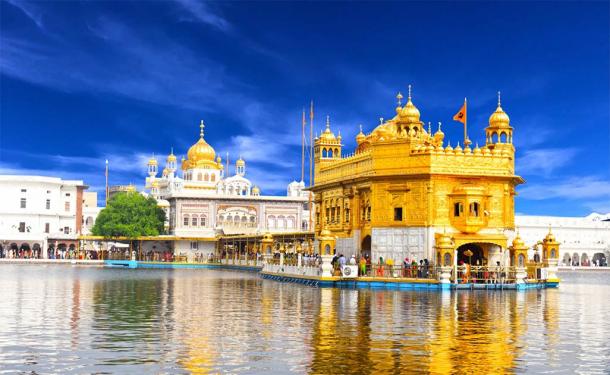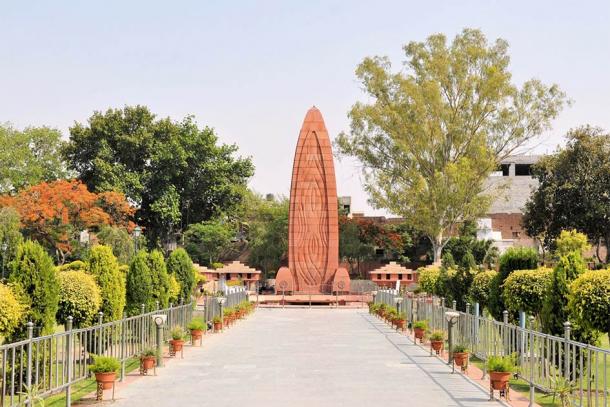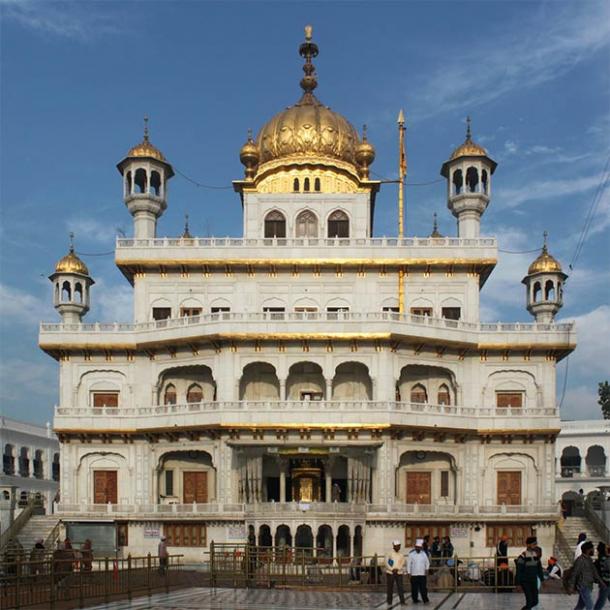While the followers of Sikhism can be found all over the world, the supreme spiritual site of the faith is the Golden Temple in Amritsar, India. It is known as Harmandir Sahib , the abode of God, and has played a crucial role in the development of Sikhism.
A Glimpse into the History of the Golden Temple
Sikhism is a monotheistic religion that was established by Guru Nanak (1469–1539). He and the nine gurus that followed him, greatly expanded the faith, especially in Punjab. The temple and the city of Amritsar were selected by the Third Sikh Guru. The land was given by the Mughal Emperor Akbar the Great.
A large pool was built at the site in the 1570s and the fifth Guru started the construction of the temple. The Mughal emperors , however, began to view the Sikhs with suspicion and executed two Gurus. The temple was built despite the persecution of the Sikhs who often rebelled against the Mughals. It became a pilgrimage center for the religion and a Gurdwara, or assembly place.

Beautiful view of Golden Temple shri darbar sahib in Amritsar, Punjab ( Singh_Ramana / Adobe Stock)
In the 18 th century the Mughals and the Afghans Durrani Dynasty attacked the Sikhs and desecrated the temple. With great determination, the Sikhs rebuilt the temple and by the start of the 19 th century, they had established an independent state and created an empire under Ranjit Singh.
The temple was reconstructed and adorned it with gold. In the 1830s Ranjit Singh covered the inner sanctum of the temple with gold foil and this gave the sacred place the name of Golden Temple. When the British defeated the Sikh Empire in three wars and annexed Punjab, the Sikhs were allowed to administer the temple and the faith continued to grow.
In the late 19 th and 20 th century the Singh Sabha Movement was centered on the holy site and sought to protect and promote the religion. In 1919 Sikhs protesting the arrest and deportation of two national leaders were slain by soldiers of the British Indian Army near the Golden Temple. It came to be known as the Amritsar Massacre or Jallianwala Bagh massacre.

Jallianwala Bagh massacre memorial, Amritsar, Punjab, India ( flocu / Adobe Stock)
Militant Sikhs who wanted a Sikh independent state in Punjab seized the temple and in 1984 the Indian army launched Operation Blue Star to retake the temple from the militants. This resulted in the death of hundreds, the assassination of Prime Minister Indira Gandhi (nee Nehru), and years of conflict in Punjab. The sacred site was badly damaged.
Although it was restored on the orders of the Indian government, these were removed and new work was completed by the Sikhs using contributions from the faithful from all over the world. Today, faithful followers from all over the world make pilgrimages to the Golden Temple.

The Akal Takht, situated at the Golden Temple ( lehic / Adobe Stock)
The Sights of the Golden Temple in Amritsar
The Golden Temple ( Harmandir Sahib ) is a place of worship. It was built on a square plan with four entrances and at its heart is a large man-made pool with a path circling the water. The open design of the space is intended to welcome all people, irrespective of their origin, caste, race or even religion.
The Golden Temple is a large complex and at its center is the inner sanctum which is situated on a marble platform within the pool. The sanctum is 36 x 36 feet (12 x 12 m) and is two-stories high. The second story and dome are golden.
The center is reached by a causeway across the water. The Akal Takht, ‘the throne of the timeless one’, is the center of religious authority in Sikhism. Here religious judgments have been handed down since the 18 th century, after the death of the last guru. It was badly damaged during the fighting in 1984.
Among the other architectural features of the complex are a clock, large prayer hall, towers and the langar, a Sikh communal eating hall where visitors can have a meal, irrespective of their class or origin. 50 000 people per day eat the vegetarian meals that are all cooked by volunteers and on holy days, there are often up to 100 000 people eating together.

The large pot used to cook the communal meal at the Golden Temple ( Javier Cuadrado / Adobe Stock)
The Sikh festivals held here and are vibrant and colorful and everyone is welcome.
Visiting the Glorious Golden Temple
The Golden Temple is located in the center of Amritsar. As the site open all day and night it is very busy and the best time to visit is early morning, although the Golden Temple is lit up at night and is spectacular. The museum at the site is dedicated to the teaching of the Sikh religion and its history.
Top image: Pilgrim at the golden temple in the city of Amritsar-India, main temple of Sikhs, during sunset. Source: MICHEL / Adobe Stock
By Ed Whelan
References
Chopra, R. (2013). A Museum, a Memorial, and a Martyr: Politics of Memory in the Sikh Golden Temple . Sikh Formations, 9(2), 97-114
Available at: https://www.tandfonline.com/doi/abs/10.1080/17448727.2013.822142>
Jutla, R. S. (2002). Understanding Sikh pilgrimage . Tourism Recreation Research, 27(2), 65-72
Available at: https://www.tandfonline.com/doi/abs/10.1080/02508281.2002.11081222
Tripathi, G., Choudhary, H., & Agrawal, M. (2010). W hat do the tourists want? The case of the Golden Temple, Amritsar. Worldwide Hospitality and Tourism Themes
Available at: https://www.emerald.com/insight/content/doi/10.1108/17554211011090111/full/html?fullSc=1
Related posts:
Views: 0
 RSS Feed
RSS Feed

















 September 10th, 2020
September 10th, 2020  Awake Goy
Awake Goy  Posted in
Posted in  Tags:
Tags: 
















